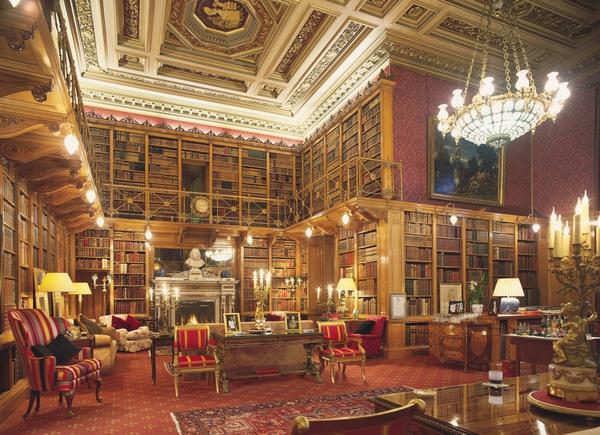I recently visited Alnwick Castle in Northumberland. The interior was a real surprise, decorated by Adam in the 18th century, it was remodelled by Anthony Salvin in the Italian Renaissance sale in the 19th century and is incredible.
The library is furnished in oak, finely inlaid with perhaps sycamore and is a very unusual colour. The oak is pale and unlike any oak I've seen before. So pale that the difference between the oak and the sycamore inlay is very subtle. The oak is not at all yellow and the medullary rays were silver.
This colour has been preying on my mind and I'd like to reproduce it. My thoughts are that
back in the 1860s when the library was installed the oak was bleached, possibly very white and over the next 150 years it has mellowed but not darkened at all.
I have little experience in bleaching timber, all of it unsuccessful. My go to book for old recipes is Adventures in Woodfinishing but when it comes to bleaching, George scares me with his tales of caustic filled swimming pools and Hydrogen peroxide.
I understand there are two pack bleach products, does anyone have experience with these or recommendations ?
The library is furnished in oak, finely inlaid with perhaps sycamore and is a very unusual colour. The oak is pale and unlike any oak I've seen before. So pale that the difference between the oak and the sycamore inlay is very subtle. The oak is not at all yellow and the medullary rays were silver.
This colour has been preying on my mind and I'd like to reproduce it. My thoughts are that
back in the 1860s when the library was installed the oak was bleached, possibly very white and over the next 150 years it has mellowed but not darkened at all.
I have little experience in bleaching timber, all of it unsuccessful. My go to book for old recipes is Adventures in Woodfinishing but when it comes to bleaching, George scares me with his tales of caustic filled swimming pools and Hydrogen peroxide.
I understand there are two pack bleach products, does anyone have experience with these or recommendations ?
Last edited:


































